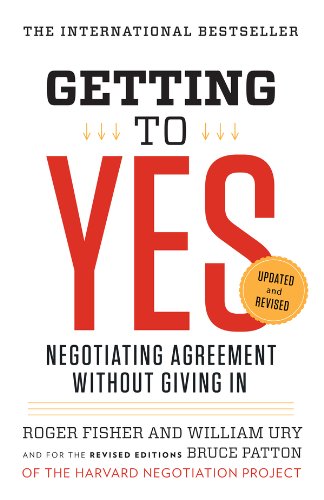

This article is an excerpt from the Shortform summary of "Getting to Yes" by Roger Fisher and William Ury. Shortform has the world's best summaries of books you should be reading.
Like this article? Sign up for a free trial here .
In our daily lives, we all negotiate with others for things we want, whether the context is business or personal. But we almost always run into issues in negotiation. What’s their cause? And how can we avoid them?
We’ll cover the common issues in negotiation and the best strategies for negotiating effectively.
The Source of Issues in Negotiation
Despite the prevalence of negotiation, we don’t do it very well. Most people haven’t been taught negotiation skills, but a bigger problem is the inadequacy of the age-old adversarial method we use, which people call positional bargaining. This type of bargaining is the source of most issues in negotiations.
In positional bargaining, each side starts with a position, argues and defends it, and bargains to reach a compromise. An example is when you bargain with a seller over the price of something.
People tend to take one of two approaches: aggressive or friendly (hard or soft). Hard negotiators strive to win by taking the toughest positions and holding out the longest. They may use posturing, threats, and other strong-arm tactics. This is one issue in negotiation. Those who take a friendlier approach try to avoid conflict and reach an amicable agreement. But this is another issue in negotiation. Neither approach is ideal. Positional bargaining often produces unfair, less-than-optimal outcomes, and it’s inefficient and damages relationships.
The Solution: Principled Negotiation
To avoid common issues in negotiation, use principled negotiation. This tactic is designed to generate fair agreements efficiently and civilly. Negotiators decide issues on the objective merits (facts and evidence), rather than on what’s acceptable or unacceptable to each side, and they look for mutual gains. Where interests conflict, results are based on fair, objective standards. Principled negotiators avoid deceptive tactics, posturing, and threats, and therefore avoid many issues in negotiation.
Anyone can use principled negotiation in almost any circumstances. There are four elements:
1. People: Separate personalities and emotions from the issue being negotiated. Because the relationship involves people and their emotions, it gets intertwined with the substance of the negotiations. For example, you may think you’re simply pointing out a problem (“The warehouse is a mess”), but someone on the other side may take it as a personal attack or blaming. Handling people sensitively and respectfully is a prerequisite for successful negotiation and for a constructive ongoing relationship.
This is important because most negotiations involve a long-term relationship that’s important to maintain. For instance, union members and bosses must be able to work together for a strong company bottom line and job stability. Accounting for human emotions is important in avoiding many issues in negotiation.
2. Interests: Focus on the underlying interests of each side, not on positions. Interests involve people’s needs, desires, fears, and concerns — they’re the reasons behind the positions people take.
An example illustrates the difference. Two men get into an argument at a library because one wants to keep a window open while the other wants to close it; neither is willing to go halfway. The librarian asks each man for his reasons. One wants the window open to get fresh air; the other wants it closed to avoid a draft. So, the librarian opens a window in an adjoining room to provide airflow and avoid creating a draft. She resolved the conflict by focusing on the men’s underlying interests, rather than their positions on opening or closing a particular window. This resolved the initial issues in negotiation.
3. Options: Come up with multiple options based on mutual interests. A common challenge in negotiations arises when there doesn’t seem to be a way to split the pie that serves both sides. The choice seems to be having a winner and a loser, and neither side wants to lose. But the dilemma opens up the opportunity for creative options that expand the pie before dividing it. A creative solution can break an impasse, avoid other issues in negotiations, and result in a better agreement.
For example, the Egyptian-Israeli peace treaty reached at Camp David in 1978 succeeded in part because negotiators considered the interests behind the two countries’ positions on the issue of what to do with the Sinai Peninsula, which Egypt had occupied since 1967. Each side wanted control over it and neither would compromise. Egypt’s interest was in sovereignty over land of historical importance to them. Israel’s interest was security — they didn’t want Egyptian tanks positioned on their border. The solution addressing both interests was to give Egypt sovereignty but create large demilitarized zones.
4. Criteria: Base the agreement on objective (fair and independent) standards. Standard negotiations are a battle of wills. For instance, with a labor contract, the prevailing side determines the level of pay increases and benefits, based on their view of what’s appropriate. But you can avoid arbitrary agreements by demanding the results meet objective standards independent of either side — for instance, market values, legal standards, average salaries, expert opinions or data, or customary practices. Instead of arguing about what either side is willing to accept, agree to objective standards that will serve as the rationale for the specifics in the agreement. That way, neither party is imposing their say-so for what’s fair on the other.
Other Issues in Negotiation
Two more types of issues in negotiation are:
- Dealing with the human element when you can’t separate people and their emotions from the substance because people are the problem.
- Negotiating successfully when there’s a power imbalance — when the other side is more powerful than you are.
Handling Human Problems
People’s defensive or reactionary behavior is often a reason that negotiations fail. Dealing with the human element of how you’re treating the other side and how the people are reacting is critical to success. Whether you’re focusing on a specific human issue, or people are just one concern of negotiation, follow these guidelines:
- Build a good working relationship that’s separate from the substance of the negotiations. A good relationship makes it easier to get a good outcome and good outcomes make a good relationship even better. But don’t entangle the relationship with substance. For instance, don’t make concessions in order to save the relationship and don’t try to force a concession by threatening the relationship, for instance by saying something like, “If you really cared, you’d accept the proposal.”
- Negotiate relationship issues. If human problems stymie negotiations, negotiate the human issues on their merits (facts and evidence). Without judging, state your concerns, perceptions, and feelings about the other’s behavior and ask for theirs. Propose fair standards for how you should deal with each other.
- Don’t treat them the way they treat you, or you’ll encourage further negative behavior. Demonstrate by example the kind of behavior you prefer.
- Respond rationally. If others are behaving irrationally, continue trying to be rational yourself. Question your assumptions about their behavior. They may see the situation differently. Try to learn and understand their reasoning and you may be able to help them change it.
Human problems in negotiation can crop up around issues of personality, gender, or culture. While people share certain basic needs, such as being loved and respected, we differ on many other levels. Here are some guidelines for recognizing and adjusting to differences.
- Get in sync. Be aware of and adapt to the perceptions, values, customs or norms, and feelings of the people you’re dealing with. To influence them in negotiations you need to understand where they’re coming from. Differing preferences and styles may include: whether the atmosphere is relaxed or formal, how close to each other people sit, whether the conversation is direct or indirect, whether the relationship extends beyond business, and who serves as spokesperson for each side.
- Adapt this book’s general advice to your specific situation. Use the approach but adapt the principles to the context. For instance, consider where you are (environment, community, or country) and local or industry customs.
- Be aware of differing beliefs and customs, but don’t stereotype. Individuals’ attitudes and characteristics may differ from those of their group (for instance, not all Japanese prefer indirect communication). This applies to genders as well. It’s insulting to make assumptions based on the group to which someone belongs.
- Question your assumptions. Be open to learning that others are different from what you expected. Everyone has special interests and qualities that don’t fit any mold.
Through careful planning and shifts in your mindset, you can successfully handle issues in negotiation.
———End of Preview———

Like what you just read? Read the rest of the world's best summary of "Getting to Yes" at Shortform . Learn the book's critical concepts in 20 minutes or less .
Here's what you'll find in our full Getting to yes summary :
- Why the standard way of negotiating is completely wrong
- How to find outcomes that are wins for both sides
- How to protect yourself against aggressive negotiators






